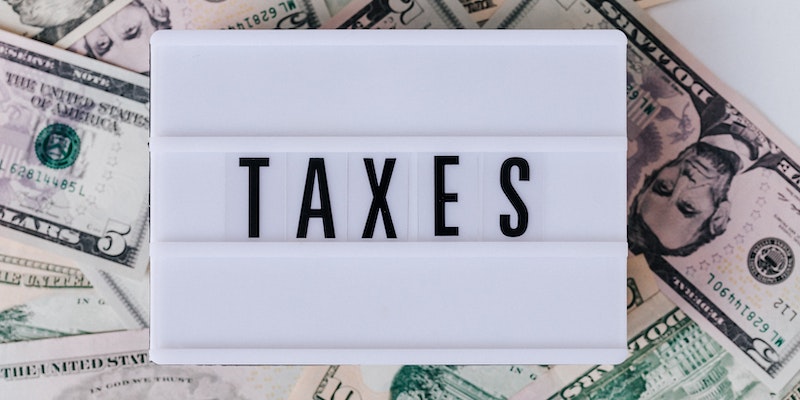



(威進企業有限公司 MIGHTY EXPRESS ENTERPRISE LIMITED)
-

Top 5 Trading Strategies
Nov 14, 2023Trading the markets can grow your investment capital, but it can also be risky if done incorrectly. Markets are unpredictable, so you can use a five-step test to find the best trading strategy for you. These actions can improve your ability to make winning trades while lowering risk. The five-step test includes these crucial steps: 1: The Trade Setup 2: The Trade Trigger 3: The Stop Loss 4: The Price Target 5: The Reward to Risk. Read the blog to learn how to apply these steps to determine if the trade is worth making.
Read More -

What is Deposit Insurance Fund (DIF)
Nov 14, 2023A (DIF) Deposit Insurance Fund is a private insurance fund that covers all deposits at member banks beyond the (FDIC) Federal Deposit Insurance Corporation limitations. The fund is the government’s guarantee on bank deposits up to $250,000 that are FDIC-insured. The FDIC uses these funds to reimburse customers who had accounts below the limit in case an insured bank fails. Most of the DIF’s funding comes from quarterly assessments of insured banks. The assessment of a bank is determined by dividing the assessment rate by the assessment base.
Read More -

What is the Bank Insurance Fund (BIF)
Nov 14, 2023The Bank Insurance Fund (BIF) was a component of the FDIC that protected troubled banks, particularly during the late 1980s savings and loan crisis. The BIF combined with another fund named the Savings Association Insurance Fund (SAIF) in 2006 to form the Deposit Insurance Fund (DIF). This article will highlight the definition of the Bank Insurance Fund (BIF), how it works, and its distinction from DIF and SAIF.
Read More
-
 Investment
InvestmentWhat is a Bond Rating
Nov 14, 2023 -
 Investment
InvestmentWhat is Return of Capital (ROC)
Nov 14, 2023 -
 Investment
InvestmentGrid Trading Definition
Nov 14, 2023 -
 Taxes
TaxesWhat is IRS Publication 503: Child and Dependent Care Expense
Nov 13, 2023 -
 Taxes
TaxesTypes of Income the IRS Can't Touch
Nov 13, 2023 -
 Taxes
TaxesWhat is a Gift Tax
Nov 13, 2023 -
 Taxes
TaxesTaxes on Physical Gold and Silver Investments: Introduction
Nov 13, 2023 -
 Taxes
TaxesWhat is Individual Tax Return
Nov 13, 2023 -
 Taxes
TaxesWhat is Form 1040-NR
Nov 13, 2023 -
 Taxes
TaxesWhat is IRS Publication 970
Nov 13, 2023 -
 Banking
BankingWhat Is Pre-Provision Operating Profit—PPOP: A Complete Understanding
Nov 16, 2023 -
 Know-how
Know-howWhat Is A Surrender Charge: All You Need To Know
Nov 16, 2023 -
 Know-how
Know-howWhat Should Be Included In A Restaurant Business Model: An Overview
Nov 16, 2023 -
 Taxes
TaxesKnow How Effective Tax Rate Is Calculated From Income Statements?: A Complete Guide
Nov 16, 2023 -
 Know-how
Know-how7 Mistakes To Avoid With Your Roth IRA in 2023: A Complete Guide
Nov 16, 2023 -
 Investment
InvestmentExploring Impact Investing with a Robo-Advisor
Nov 16, 2023 -
 Investment
InvestmentCall Options: Choice to Buy vs. Obligation
Nov 16, 2023 -
 Banking
BankingReviewing the Hawaiian Airlines World Elite Mastercard
Nov 16, 2023 -
 Know-how
Know-howFinancial Advisors' Motivation: Selling Life Insurance
Nov 16, 2023 -
 Investment
InvestmentOptimal Choices: Best International Index Funds
Nov 16, 2023 -
 Investment
InvestmentHomeownership: An Investment Perspective
Nov 16, 2023 -
 Know-how
Know-howGuide to Converting a 401(k) into a Roth 401(k)
Nov 16, 2023 -
 Banking
BankingReviewing the Old Navy Visa Card
Nov 15, 2023 -
 Mortgages
MortgagesExploring Piggyback Mortgages
Nov 15, 2023






